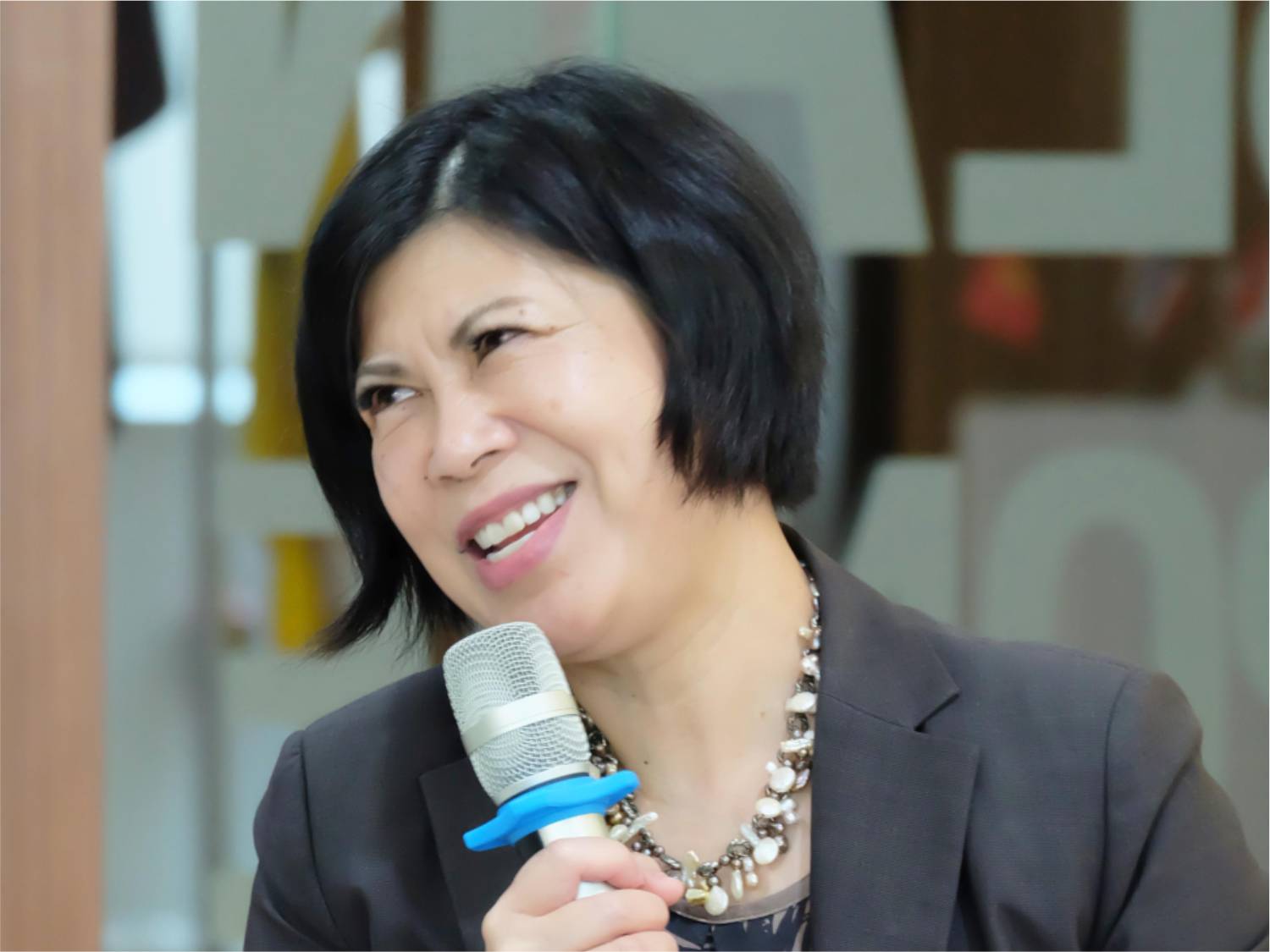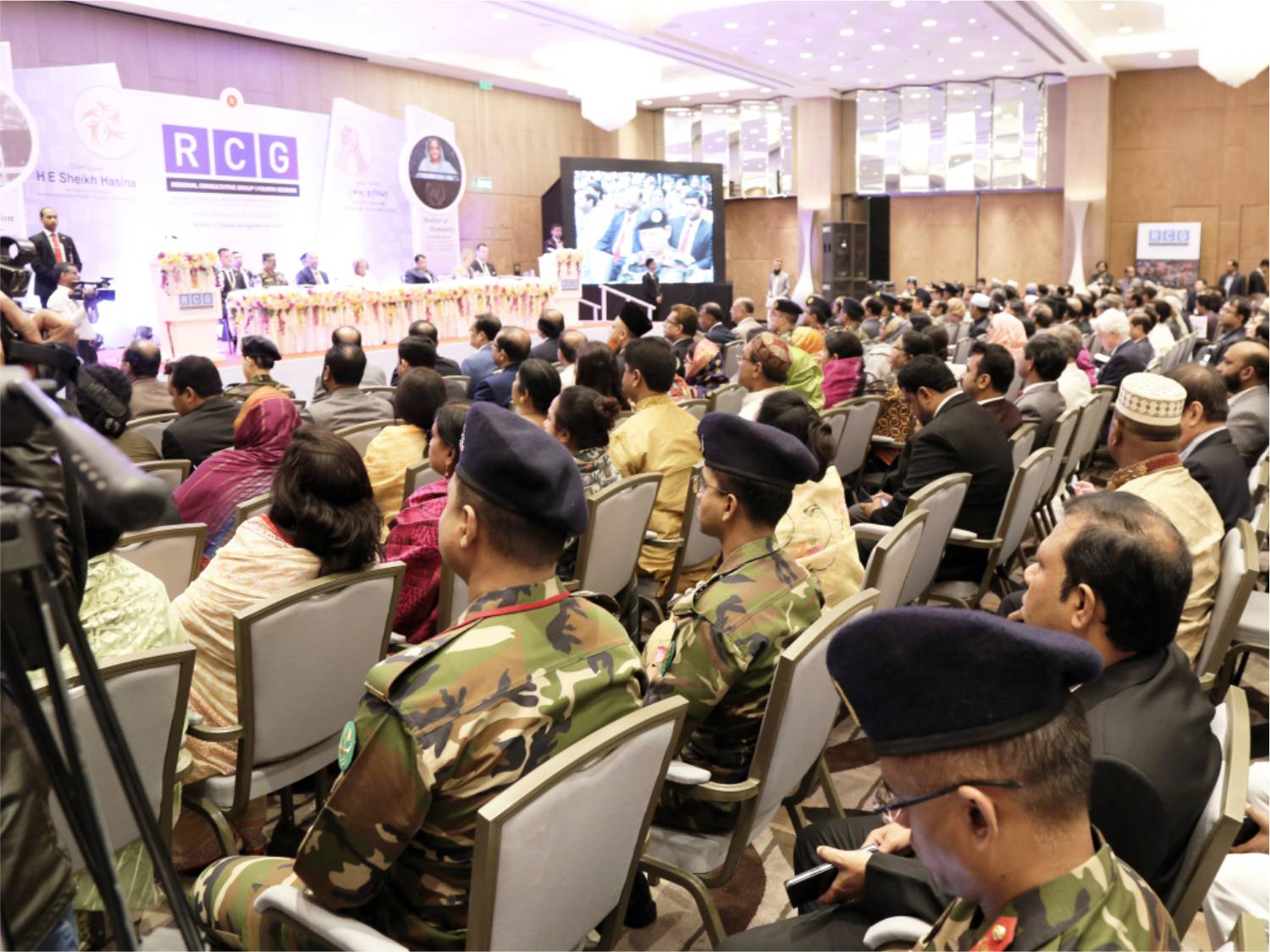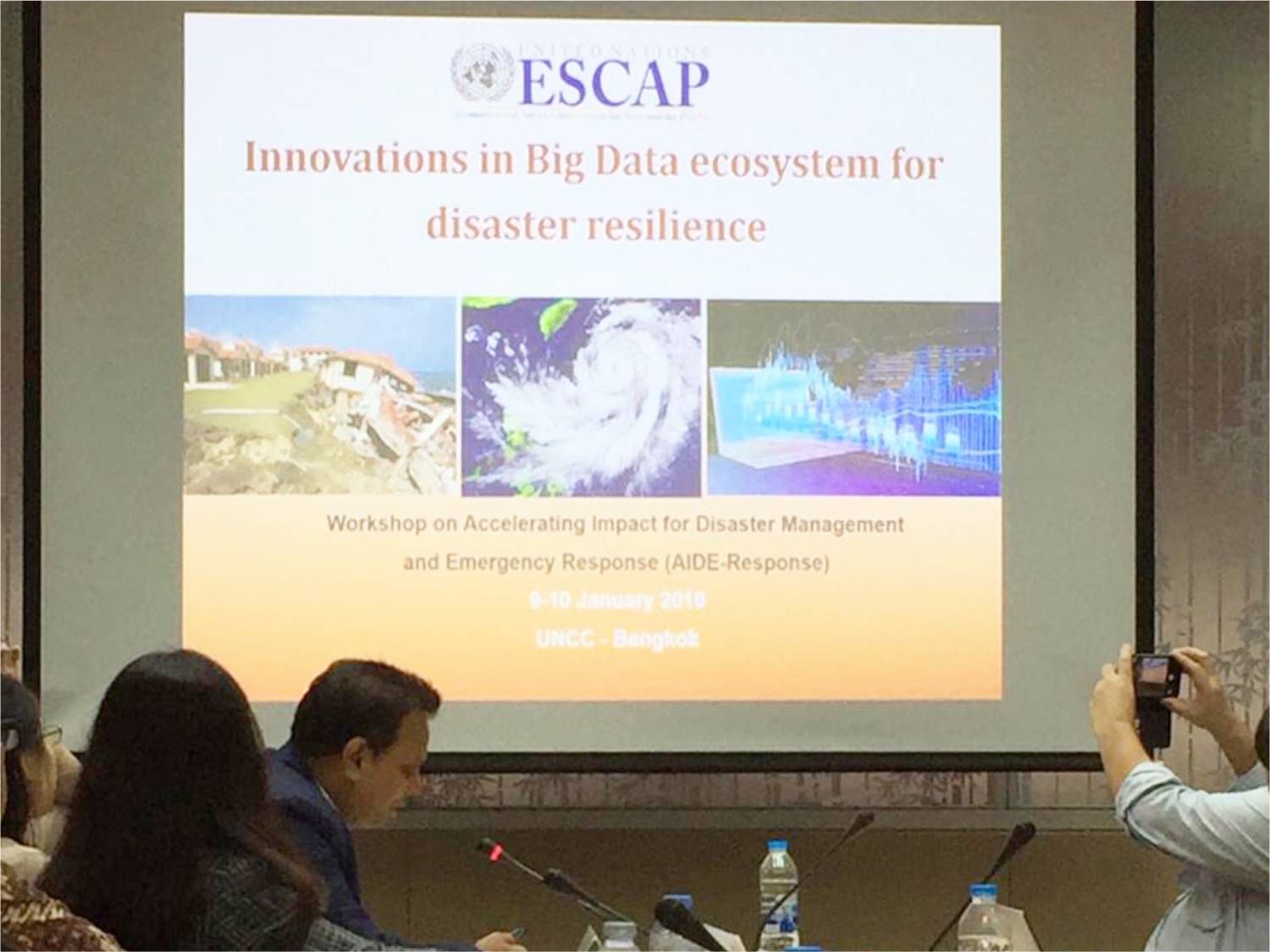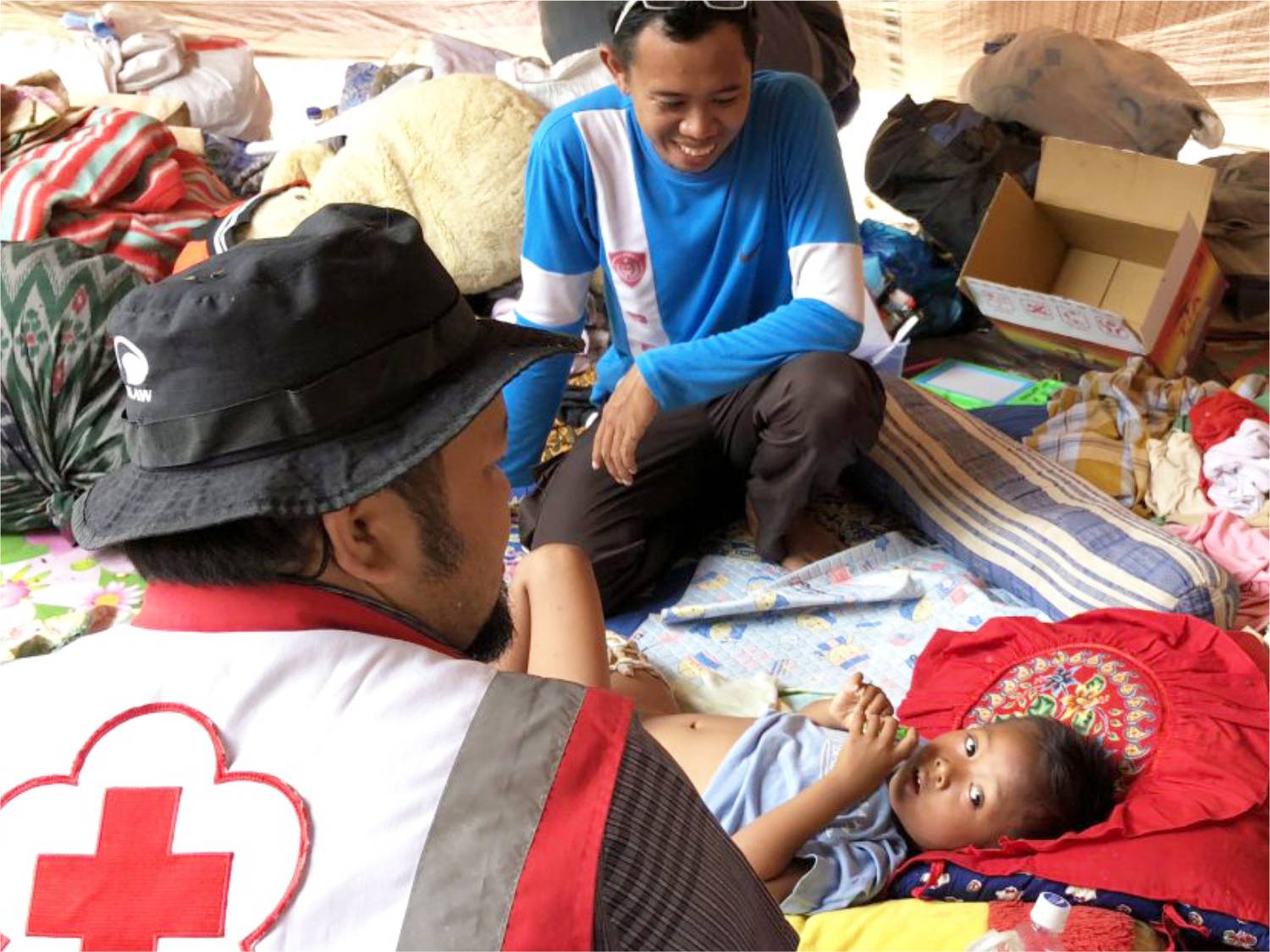Vol 47-H.E. Pam Dunn

H.E. PAM DUNN
H.E. Pam Dunn is New Zealand’s Ambassador to ASEAN, and she was New Zealand’s first person of Asian descent to head a diplomatic post. After working her way through a range of diplomatic roles – both at home in New Zealand and significant time in China – Ambassador Dunn took on her current role in early 2018. This broad experience as a leader across varying contexts and with diverse teams has provided her a unique insight and opinion on just what leadership means, and how to be a strong and effective leader in a modern, changing world. During late 2018, Ambassador Dunn delivered a leader’s talk to the AHA Centre’s Executive (ACE) Programme participants, allowing participants a unique and engaging insight into her experience and knowledge for their futures in leading the ASEAN region on disaster management.
Mrs. Dunn’s leadership career is full of challenges and ground-breaking firsts. Her role in the early 2000’s as New Zealand Consul General in Shanghai saw her become the first Asian-New Zealand to take up such a high diplomatic post. In the array of roles that followed – both at home and abroad – Mrs. Dunn was to learn about not only the people she led, but more about herself and her own point of view on being a successful and impactful leader for the teams she headed. She highlights the fact that she made mistakes, as we all do, but that the key was to learn from those mistakes and how to improve. Such learning and self-awareness is an important self-growth element to becoming a better leader. Mrs. Dunn also spoke of taking on the harder aspects of leadership, whether working with under-performing staff or having to discharging staff who worked hard due to organisational change. She highlights that this – while perhaps the hardest part of leadership – is also the part that defines a great leader from the pack. Being prepared for change, and acting on organisational decisions that you may not personally agree with are just a couple of challenging contexts that one signs-up for when they take on leadership roles.
Mrs. Dunn also spoke of the importance of understanding what your values are, and implementing them not only within your own work, but within your team’s efforts as well. For her, respect is key, and she highlights the importance of showing such respect to all people in the workplace and outside, regardless of their position, their characteristics, or any other features that are different from our own. She also reminds us that in this modern, changing world, the idea of leadership has changed. No longer must we ‘look’ or seem like a leader from appearance only, but that new leaders must be engaged, responsive, and aim to train and build those around them to also carry the leadership burden.
Moving to the ASEAN region and adapting to a new context, culture and team has been Mrs. Dunn’s most recent challenge, within which she has again revisited the importance of strategic leadership that she learnt during her time in the New Zealand Embassy in China. Having the ability to manage up, down and sideways, as well as determining your roles, priorities and where to put your time and effort are all integral aspects of leading in a busy, evolving work environment. Such leadership is therefore integral in the disaster management context.
Mrs. Dunn gave her insight on the key elements of what she believes forms effective and successful leadership. “Strategic leadership is key to ensuring that we are empowering and creating ownership within our team to understand what they are doing and why they are doing it”, she said. Mrs. Dunn also highlights the importance of diversity, as it opens the door for creativity and new ideas. While it is much more challenging than a team that mirrors your own characteristics, it can also be much more successful, provided we ensure the diverse range of staff feel comfortable that they have a place within the team. Alongside this, providing time to your staff – and importantly yourself – is also a must for great leaders. Time, she says is one of the most valuable things we can give. Mrs. Dunn also highlights the importance of having a mentor to guide you through the challenges, obstacles and hard times that litter the path of leadership. Finally, Mrs. Dunn implored the audience to ‘just say yes’. When she herself built the confidence to just say yes to opportunities, more and more opportunities presented themselves.
The Ambassador reminds us to think not about whether you are good enough, but whether you can help others reach their potential – whether you can make the world a better place. “Say yes and see what happens, you may be surprised”, she finishes with a smile.
Written by : William Shea | Photo : AHA Centre, ASEAN Secretariat
- Published in The Other Side
Vol 47 – 4th International Conference of the Regional Consultative Group on Humanitarian Civil-Military Coordination for Asia and the Pacific

4TH INTERNATIONAL CONFERENCE
OF THE REGIONAL CONSULTATIVE GROUP ON
HUMANITARIAN CIVIL-MILITARY COORDINATION FOR ASIA AND THE PACIFIC
The Regional Consultative Group on Humanitarian Civil-Military Coordination for Asia and the Pacific (RCG) was formed in 2014 as an inter-regional forum designed to engage and connect key disaster management actors from across Asia and the Pacific to hold a meaningful dialogue with military representatives. In late January 2019, the AHA Centre engaged in the RCG’s 4th annual international conference, which took place in Dhaka, Bangladesh, with over 120 representatives from 26 nations and 24 organisations coming together to share learning and experiences, as well as undertake discussions on strategies for the enhancement of regional cooperation on disaster management.
The 2019’s RCG specifically focuses towards the integral context of civil-military engagement in disaster preparedness and response efforts. It aims to enhance mutual understanding, awareness and integration between civil and military actors in response, with the ultimate aim of predictability for both parties on how the other will work. Discussions revolved around coordination planning, joint civil-military response mechanisms, and information and resource sharing, to determine how each party can mutually benefit from the other’s engagement in humanitarian efforts.
The AHA Centre’s involvement in the RCG is particularly important, due to its coordination role in the disaster-prone region. The RCG has identified 5 countries as having the potential need for large-scale responses of an international nature, of which three are located within ASEAN, alongside Bangladesh and Nepal. The AHA Centre’s engagement works further to promote its overall coordination role in the region, allows it to engage further with both international and military actors, and also adds to the Centre’s understanding of disaster management contexts in other nations that sit outside of ASEAN. Understanding such as this paves the way for potential ASEAN engagement in responses outside of the region, in-line with the final stages of the One ASEAN, One Response vision.
Furthermore, the convention also touches historically sensitive subject, military data-sharing for humanitarian responses. It was highlighted that there would be significant value in humanitarian actors having access to military information during disaster response, as well as the value that could be gained by military actors through accessing information provided by civil stakeholders, such as the information developed by the AHA Centre itself on a regular basis.
Overall, the general consensus was that with increasing local capacity and engagement in disaster management, the international civil-military roles must switch to becoming enablers – not supporters – in countries facing disaster. Promoting local and national-led disaster response, through the strengthening of preparedness, dialogue and predictability in response actions, would ensure that the capacity and efficiency of disaster response only continues to gain momentum across the Asia-Pacific region.
Written by : William Shea | Photo : OCHA ROAP/ Anthony Burke
- Published in AHA Centre Diary 2
Vol 47-Accelerating Impact for Disaster Management & Emergency Response Workshop

ACCELERATING IMPACT
FOR DISASTER MANAGEMENT & EMERGENCY RESPONSE WORKSHOP
BANGKOK, THAILAND
January 9th 2019 saw members of the AHA Centre team involved in the Accelerating Impact for Disaster Management & Emergency (AIDE) Response workshop, a part of ongoing research being undertaken by the University of Lancaster to support the AHA Centre’s operational processes and decision making in times of disaster.
Taking place at the United Nations Conference Centre in Bangkok, this workshop brought together a range of engaged parties including the United Nations Economic and Social Commission for Asia and the Pacific (UNESCAP), the University of Indonesia, other disaster response organisations, and representatives from the private sector, to further explore the latest tools that could improve decision making processes during emergency response.
The aim of AIDE-Response, and the research project overall, is to optimise the AHA Centre’s operations related to disaster response decision making, which was assessed by the University of Lancaster during the Centre’s responses in 2018. During the event a range of new tools and ideas were identified and discussed to ensure the AHA Centre remains at the forefront of disaster management, through the use of new and ground-breaking technologies. The Indonesian National Disaster Management Authority (BNPB) and Humanitarian Forum Indonesia were also present during the workshop, providing relevant insights into processes and potential for engaging identified tools for the benefit of all involved.
Written by : Janggam Adhityawarma | Photo : University of Lancaster
- Published in AHA Centre Diary 1
Vol 47-IFRC International Federation of Red Cross and Red Crescent Societies

IFRC
INTERNATIONAL FEDERATION OF RED CROSS
AND RED CRESCENT SOCIETIES
Engagement between the AHA Centre and the International Federation of Red Cross and Red Crescent Societies (IFRC) has been ongoing since 2014, with particular focus towards information and knowledge-sharing, as well as technical exercises.
The IFRC holds strong similarities to the AHA Centre in its approach to disaster management – with its aim to promote and support united disaster response and preparedness efforts on a global scale. This mission only serves to strengthen the need for such a strategic partnership, as the AHA Centre strives to do the same from an ASEAN regional perspective. Therefore, recent years have seen the IFRC and the National Societies become important stakeholders within the ASEAN Joint Disaster Response Plan (AJDRP), the AHA Centre’s key operational mechanism for emergency response under the One ASEAN, One Response plan. Within these efforts, both organisations have embarked on continuous information sharing and distribution during emergency response operations, with both organisations’ Emergency Operations Centres (EOC) playing pivotal roles in providing the sector, and the wider community with relevant and up-to-date information during times of disaster.
The IFRC also has been a key participant in the ASEAN Regional Disaster Emergency Response Simulation Exercise (ARDEX), within which the AHA Centre takes the lead in the exercise’s design and organisation. The IFRC has also provided valuable and active engagement within the ASEAN Emergency Response and Assessment Team (ASEAN-ERAT) training programme, most recently providing facilitation and training services on Humanitarian Logistics as part of the ASEAN-ERAT Level 2 course, held in September 2018. The IFRC also supported the ASEAN-ERAT advance course pilot on Rapid Assessment, in which they facilitated a session on Protection, Gender and Inclusion in Emergency.
The IFRC provides capacity development support to the ASEAN Member States through the AHA Centre’s Executive Programme (ACE Programme), in which they share knowledge and expertise regarding resilience, protection and inclusion, alongside Disaster Law and advocacy. The AHA Centre has also taken on opportunities to participate in the IFRC’s signature programmes – such as the Regional Disaster Response Teams and Operations Management Training – to learn further about how IFRC staff and volunteers support national disaster response teams and work alongside international teams. These mutual engagements and cross-learning exercises have supported both the IFRC and AHA Centre to gain a better understanding of how each other’s processes and mechanisms work, and how they can mutually engage and build on each other ‘s strengths, creating further efficiency and stronger impact during times of major disaster response.
Written by : Carla Budiarto | Photo : IFRC
- Published in Partnership
Vol 47- Facing Flood Preparedness and Safety Tips

FACING FLOOD
PREPAREDNESS AND SAFETY TIPS
The ASEAN region faces flooding on a regular basis, that takes its toll on the lives, livelihoods and economies of the region’s communities. Of the 1,586 disasters monitored by the AHA Centre in 2018 across ASEAN, 56.5% were floods, a large majority of which were experienced by Indonesia, as well as frequently affecting communities in Malaysia, Myanmar, the Philippines, Thailand, and Viet Nam. Such constant occurrences also provide us with a better opportunity to understand and prepare for flooding emergencies, in order to lighten the impact should your home be inundated by floodwaters. The following tips and processes can be applied and implemented throughout the ASEAN region, to help ensure the safety of you, your family and your property should water levels rise.
BEFORE A FLOOD
Whether before the wet season, or with an impending storm heading your way, there are a number of simple steps you can take to prepare for floods. We recommend that all ASEAN citizens – particularly those living in flood-prone regions – undertake the following actions on a yearly basis.
1. KNOW FLOOD POINTS AND SAFETY POINTS
Both within your home and the surrounding community, learn your high spots and how to get there quickly. Your safety of course depends on the height of the floodwaters on any given occasion, but the higher you can be the more likely you will remain safe.
2. LEARN YOUR LOCAL WARNING SYSTEMS
Almost all local governments will have warning systems, especially those in areas known to flood, so learn what they are, what to do, and do as you are told should the systems turn on.
3. MONITOR CONDITIONS
Whether through the AHA Centre, your National Disaster Management Organisation, or your local news and weather broadcaster, always remain up-to-date with the latest weather conditions and flood warnings.
4. PREPARE A GRAB-BAG
Important for any disaster preparedness situation, a Grab-Bag should be prepared should you have to leave in haste due to rising waters. Amongst other things, it should contain water, nutritional food/snacks, spare warm clothes, a torch, a communication device, and important medication.
DURING A FLOOD
Whether a flood begins slowly or arrives as an unexpected flash-flood, there are numerous things you can do to avoid being caught in the middle of fast-moving waters.
1. LISTEN TO EMERGENCY BROADCASTS
Whether through your local television or radio station, or any other means identified by your local authorities, listen for updates on a situation, and follow orders to evacuate should the need arise.
2. TURN OFF ELECTRICITY AND GAS
These flammable and dangerous elements can cause destruction or death when floodwaters hit, so turning them off at the source is necessary to minimise the chance of an explosion, fire or electrocution.
3. LEAVE
If conditions continue to worsen it is time to leave, whether ordered by authorities or not. If you are prepared you know where to go for higher ground, take your Grab Bag and head there until waters recede.
4. DON’T DRIVE OR WALK THROUGH FLOODWATERS
Floodwaters are often extremely powerful with invisible undercurrents, making it easy for people and vehicles to be washed away. Avoid crossing them at all costs, and if you are cut off then find the highest point and call for help.
AFTER A FLOOD
Never return to your home until a flood situation has completely subsided, and follow the directions of local authorities. When arriving home, go slowly and look around your property first without going straight inside your home. Check for damage to the structure of your house, and also to cables or pipes for electricity and gas. Once all is safe check again from the inside, and carefully begin to clean your home. Clean and dry everything properly, as such conditions are breeding grounds for waterborne disease.
Written by : Shintya Kurniawan, William Shea
- Published in Insight
Vol 47-Monthly Disaster Review and Outlook

MONTHLY DISASTER REVIEW AND OUTLOOK
JANUARY 2019 | DISASTER MONITORING & ANALYSIS
(DMA) UNIT, AHA CENTRE
GENERAL REVIEW OF JANUARY 2019
Statistics of recorded significant disasters in January 2019 are significantly below the average for the previous five-years during the same period. While January saw the ASEAN region only registered a little over half of the number of disasters, as well as significantly lower numbers of affected and internally displaced people, the number of casualties and damaged houses were notably much higher than the previous five-year average, with an almost two-fold number of casualties, and twenty times the number of damaged houses. These high numbers were primarily caused by flooding and rain-induced landslide incidents in South Sulawesi, Indonesia. This unfortunate event was a result of the combination of the prevailing Northeast Monsoon and Tropical Cyclone Riley in Australia, which pulled large masses of rain clouds over several parts of Indonesia.
The number of hydro-meteorological disasters is to be expected for this time of year, and influenced a majority of registered situations. Also as expected, due to the effects of the prevailing Northeast Monsoon, the affected areas were mainly found in the equatorial and southern parts of the ASEAN region. Meanwhile, the northern area is experiencing dry conditions, resulting in haze and hotspot situations. In terms of geophysical hazards, there were 65 recorded earthquakes with a magnitude 5.0 and above during January, and several activities reported on active volcanoes in Indonesia and the Philippines. Fortunately, although there were notable incidents such as the M6.7 earthquake in West Sumba Regency and the eruption of Mt Agung, both in Indonesia, there were no significant effects that constituted a disaster situation.
SEASONAL OUTLOOK
The ASEAN Specialised Meteorological Centre is expecting the Northeast Monsoon to persist until March, before entering into the inter-monsoon period in April. With this seasonal setting, the southern parts of the region will continue to experience scattered rain showers, while the northern areas will continue to experience dry conditions. Flood and rain-induced landslides will continue to be threats in the equatorial and southern parts, especially in areas where above-normal rainfall is expected – such as Malaysia, Sumatra, and Kalimantan. The continuous dry conditions and the expected above-normal temperatures in the north will likely exacerbate haze and hotspot situations, especially in the Mekong sub-region (see Figure 1).
Figure 2. The Rainfall and Temperature Outlook for the first half of February displays dry and warm conditions for some areas in the northern part of the region. Similar effects, with possible difference in spatial distribution, are expected to continue until March due to the Northeast Monsoon.
With these potential incidents, the AHA Centre is strengthening its Disaster Monitoring and Analysis Unit through an internship programme. Successful interns will help the Centre in monitoring hazards throughout the region on a daily basis, preparing necessary datasets, and analysing disaster events to support decision-making and drive actions.
Data Sources: ASEAN Disaster Information Network, ASEAN Specialised Meteorological Centre
Written by : Lawrence Anthony Dimailig
DISCLAIMER
AHA Centre’s estimation is based on data and information shared by National Disaster Management Organisations (NDMOs) and other relevant agencies from ASEAN Member States, international organisations and news agencies. Further information on each recorded-significant disaster, description and detail of data and information are available at: http://adinet.ahacentre.org/reports.
- Published in Monthly Disaster Outlook
Vol 47 – The AHA CENTRE Annual Planning Meeting 2019

THE AHA CENTRE
ANNUAL PLANNING MEETING 2019
BOGOR, INDONESIA
TEAMWORK MAKES THE DREAM WORK
Failing to prepare means preparing to fail. Therefore, the AHA Centre team dedicated two full days away from their regular duties to reflect on their 2018 achievements, as well as undertake the planning of the organisation’s activities for 2019. The AHA Centre’s Annual Planning Meeting took place in Bogor, just outside of Jakarta. Alongside consolidating their 2019 agenda, the Centre’s staff also worked together to ensure that all planned activities will contribute to the AADMER* Work Programme 2016-2020.
“The AHA Centre has several departments and we are here as a reminder that each individual is important to the team. If the AHA Centre is a boat, the operations team might be the hull. But, the boat will not move without the propeller that gives it power to move forward, which in a way symbolises the Corporate Affairs Division who takes care of finance and human-resources management. The boat also needs a steering wheel as it gives direction on where the boat needs to go, which symbolises the role of the Office of Executive Director who holds control of the steering wheel and gives direction for the organisation”, said Arnel Capili, the newly-appointed Deputy Executive Director of the AHA Centre. Arnel was using the metaphor of a boat to describe the working mechanism of the AHA Centre.
Throughout the meeting, AHA Centre’s team identified room for improvements based on 2018’s learnings, and scheduled priorities for the business as usual agendas, including induction courses for the ASEAN Emergency Response and Assessment Team (ERAT), the 6th Batch of the AHA Centre Executive Programme, and many other integral programmes and projects. On top of that, the Centre also began preparations for the launch of two new satellite warehouses to strengthen the Disaster Emergency Logistics System for ASEAN (DELSA), as well as the humanitarian mission in Rakhine State, the establishment of the ASEAN Resilient Village in Central Sulawesi, and the implementation of Integrated Programme in Enhancing the Capacity of AHA Centre and ASEAN Emergency Response Mechanism (EU-SAHA) project. The Team also agreed to reorient the organisation’s core business into five core services, in accordance to its main mandate to facilitate cooperation and collaboration in disaster management in ASEAN. The five core services of the AHA Centre cover coordination, data intelligence and analysis, resource management, knowledge and outreach, and financing.
Dipo Summa, the Knowledge and Change Management Officer of the AHA Centre underlined that, “The Centre has completed numerous activities in 2018. However, we learned that we over-estimated our capacity and placed too many plans on our plate. It is good for us to reflect on our strategies in order to re-prioritise our forthcoming agenda in 2019”.
*AADMER : ASEAN Agreement on Disaster Management and Emergency Response
Written by: Shintya Kurniawan | Photo : AHA Centre
- Published in Highlight






























